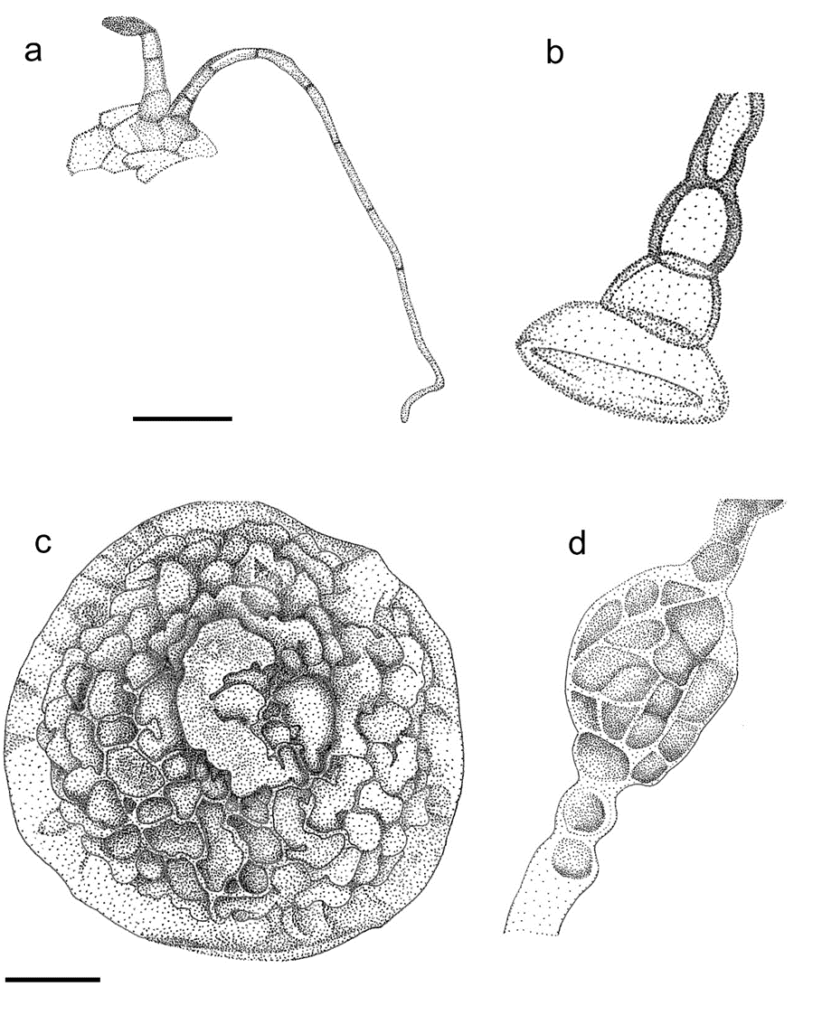Fungalpedia – Note 91 Castanedomyces
Castanedomyces Cano, L.B. Pitarch & Guarro
Citation when using this entry: Thakshila et al., in prep – Fungalpedia, Onygenales, Eurotiales and Verrucariales. Mycosphere.
Index Fungorum, Facesoffungi, MycoBank, GenBank, Fig. 1
The monotypic genus Castanedomyces was introduced by Cano et al. (2002) in the family Onygenaceae (Onygenales, Eurotiomycetidae, Eurotiomycetes). The genus is typified by C. australiensis which was isolated from soil samples from Mount Lofty in South Australia (Cano et al. 2002). Only the sexual state has been reported. Based on 18S rDNA sequences, C. australiensis clustered with Aphanoascus fulvescens (Cano et al. 2002). Castanedomyces australiensis is morphologically similar to A. fulvescens in having a membranous peridium (only found in a few onygenalean genera) and lenticular ascospores with an equatorial crest and polar thickenings (Cano & Guarro 1990). However, the pseudoparenchymatous peridium is distinct between these two genera. Castanedomyces is characterized by solitary, more or less globose, non-ostiolate, 2–3-layered ascomata and a peridium of textura angularis. Asci are hyaline, globose to subglobose, and evanescent while ascospores are light brown, unicellular, and lenticular with a tuberculate wall. Castanedomyces has appendages which are single or in pairs, straight to flexuose, tapering to the apex, with a broad hemispherical base distributed on the surface of the ascomata.
Type species: Castanedomyces australiensis Cano, Pitarch & Guarro
Other accepted species: this genus is monotypic.
Figure 1 – Castanedomyces australiensis (Isotype: FMR 5484, redrawn from Cano et al. 2002) a Appendages b Base of the appendages c Ascospore (SEM) d Initial forms of ascospore. Scale bars a = 25 µm, b, d = 10 μm and c = 1 μm.
References
Cano J, Guarro J. 1990 – The genus Aphanoascus. Mycological Research 94, 355–377.
Cano J, Sole M, Pitarch LB, Guarro J. 2002 – Castanedomyces australiensis, gen. nov., sp. nov., a keratinophilic fungus from Australian soil. Studies in Mycology 47, 165–172.
Entry by
Thakshila SAD, Center of Excellence in Fungal Research, School of Science, Mae Fah Luang University, Chiang Rai 57100, Thailand
(Edited by Kevin D. Hyde & Chitrabhanu S. Bhunjun)
Published online 18 September 2023
